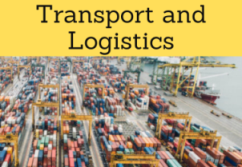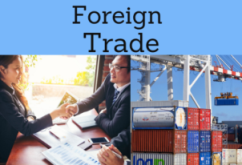Convention: Harmonization of Frontier Controls of Goods
International Convention on the Harmonization of Frontier Controls of Goods (UNECE)

The objective of the International Convention on the Harmonization of Frontier Controls of Goods, developed by the United Nations Economic Commission for Europe (UNECE), is to improve global movement of merchandises, by harmonizing frontier controls and Trade Facilitation (simple and speedy treatment for products, limiting inspections, reducing paperwork and Technical Barriers to Trade…).
- Introduction to the International Convention on the Harmonization of Frontier Controls of Goods (United Nations Economic Commission for Europe)
- Benefits of the International Convention on the Harmonization of Frontier Controls of Goods: Trade Facilitation
- Topics covered by the Convention
- The International Convention on the Harmonization of Frontier Controls of Goods and the Customs Convention on the International Transport of Goods under Cover of TIR Carnets (TIR Convention)
- Contracting Parties to the International Convention
Sample - International Convention on the Harmonization of Frontier Controls of Goods:

The educational aims of the Subject «International Convention on the Harmonization of Frontier Controls of Goods» are the following:
- Understand the objectives and benefits of the International Convention on the Harmonization of Frontier Controls of Goods programs
- Evaluate the impact of the International Convention on the Harmonization of Frontier Controls of Goods on Trade Facilitation

The Subject «International Convention on the Harmonization of Frontier Controls of Goods» is included within the curriculum of the following academic programs at EENI Global Business School:
Logistics Courses: International Transport, Maritime Transport, Multimodal, Road, Rail, Transport and Logistics in Africa.
Masters: International Business, Foreign Trade, International Transport, Transport and Logistics in Africa.


Languages:  or
or  Convention internationale sur l'harmonization des contrôles des marchandises aux frontières (UNECE)
Convention internationale sur l'harmonization des contrôles des marchandises aux frontières (UNECE)  Convenio sobre la Armonización de los Controles de las Mercancías en las Fronteras
Convenio sobre la Armonización de los Controles de las Mercancías en las Fronteras  Convenção Internacional sobre a Harmonização dos Controlos das Mercadorias nas Fronteiras.
Convenção Internacional sobre a Harmonização dos Controlos das Mercadorias nas Fronteiras.

Date of entry into force: 15/10/1985.
The International Convention on the Harmonization of Frontier Controls of Goods applies to all products (being exported or imported) or in transit, when they are moved across one or more inland, maritime or air frontier.
Topics covered by the International Convention on the Harmonization of Frontier Controls of Goods:
- Joint control of merchandises or documents (aligned on the UN Layout Key for trade documents)
- Treatment for products
- Adjustment of opening hours of frontier posts
- Frontier controls (reduction of number and duration)
- Control services
- Customs inspections
- Reduction of paperwork in import or export operations
- Import-Export Restrictions (Non-automatic Import licensing, quotas and prohibitions)
Member countries (International Convention on the Harmonization of Frontier Controls of Goods): Albania, Armenia, Austria, Azerbaijan, Belarus, Belgium, Bosnia and Herzegovina, Bulgaria, Croatia, Cyprus, Czech Republic, Denmark, Estonia, Finland, France, Georgia, Germany, Greece, Hungary, Iran, Ireland, Italy, Jordan, Kazakhstan, Kyrgyz Republic, Laos, Latvia, Lesotho, Liberia, Lithuania, Luxembourg, Macedonia, Moldova, Mongolia, Montenegro, Morocco, Netherlands, Norway, Poland, Portugal, Romania, Russia, Serbia, Slovakia, Slovenia, South Africa, Spain, Sweden, Switzerland, Tajikistan, Tunisia, Turkey, Ukraine, UK, Uzbekistan.
World Trade Organization (WCO).
- Customs and World Trade Organization (WTO)
- Preshipment Inspection. Agreement on Preshipment Inspection
- Sanitary and Phytosanitary Measures. Agreement on the Application of Sanitary and Phytosanitary Measures
- Safeguards. Agreement on Safeguards
- Kyoto Convention (Containers)
- CMR Convention
- CIM Convention
- Electronic Air Waybill (e-AWB)
- Electronic FIATA Bill of Lading
Related Organizations:
(c) EENI Global Business School (1995-2025)
Top of this page










 WhatsApp
WhatsApp